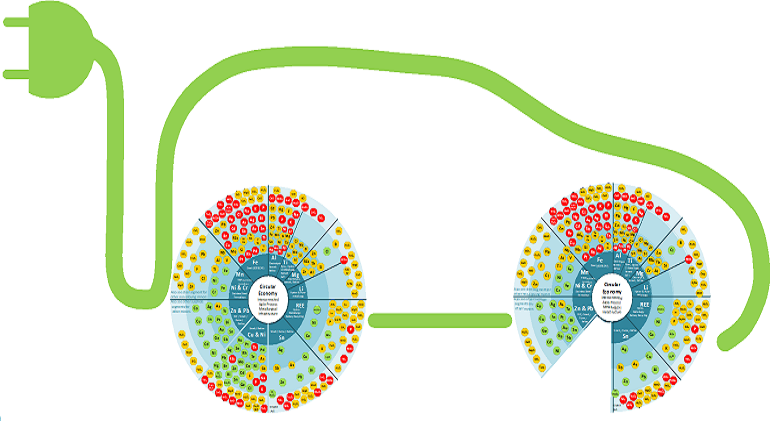

Nowadays, we face numerous global challenges such as the extinction of flora and fauna, endangering of ecosystems, the continuous growth of waste, pollution and scarcity of natural resources as effects of climate changes and pollution. Radical changes are more urgent than ever and Serbia is now embarking on the course to implement them. The Ministry of Environmental Protection with the support of the UNDP project “Circular Economy Platform for Sustainable Development in Serbia”, developed a document entitled Roadmap for circular economy(“Roadmap”). The Roadmap is modeled on the type of existing documents in EU countries, such as Slovenia, Finland, the Netherlands, Spain and France. This makes Serbia the first country in the Western Balkans to have a plan towards creating a circular economy.
The whole process is known as the transformation from linear to circular economy. The EU has already adopted a set of documents that provide guidance to the member states to transition from linear to circular economy. The European Green Deal and the Action Plan for Circular Economy are the latest in this set. On December 11, 2019, the European Commission presented the Green deal as one of the priorities of the Commission’s work in the coming years. The EU is projected to be climate neutral in 2050. To achieve this, the European Commission proposed a European Climate Law turning the political commitment into a legal obligation. As Serbia is on its way to membership in the Union, it is necessary for it to comply with the EU legislation in this regard in the forthcoming period involving a series of activities including, inter alia, a draw-up of the Roadmap 2.0 for the circular economy.
The Roadmap is the first document to put in motion a dialogue between the decision-makers and representatives of the industry, academic sector, and civil society, aimed at defining future steps and a timeline for transition from linear to circular economy in Serbia. Therefore, the Roadmap is an initial document based on which relevant stakeholders, each in their own domain, can take action for systemic change, based on more responsible resource management which shall contribute to the necessary transition. This document guides this process by providing an opportunity to involve all actors in an open dialogue and jointly create solutions for more efficient and faster transition. The goal of the Roadmap is to encourage industry to innovate and increase market opportunities for production through circular business models of new jobs creation and business, while preserving resources and protecting the environment.
The Roadmap contains recommendations for overcoming constraints that private companies in Serbia face on the path towards circular economy in their sector, collected during consultations with private sector representatives, as well as recommendations for thematic reports prepared within the project “Circular Economy Platform for Sustainable Development in Serbia”. The purpose of this document is to nudge the whole society towards radical changes in thinking, culture and attitude towards resources.
The linear method of production is based on the model TAKE – MAKE – THROW – eventually RECYCLE. The model of a linear economy was primarily driven by the profit-motive regardless of its negative impact on the environment and natural resources. In economies based on a linear economy, part of the material is recycled, while other parts that are not recycled (usually due to the design and materials used) and end up in landfills. Moreover, the circular economy should not be equated with waste management hierarchy. Namely, the hierarchy of waste management was created in a linear economy as a measure of reducing the amount of generated waste and returning one part of raw materials to production processes through recycling. The circular economy is above the waste management process because it starts primarily from a new way of thinking about using resources. Accordingly, economic, social, and ecological dimension is equally valuable.
Circular economy is a renewable industrial economy that has a changed concept of production and consumption when design, use of resources and creation of waste is concerned. There is no waste in the concept of circular economy. It only has raw materials reusable for the same or other production processes. Furthermore, renewable sources of energy have priority. Energy is used efficiently, innovative technologies, green public procurements, replacement of hazardous chemicals by those less dangerous are stimulated, entailing as inevitable the changes in the consumer habits. Some of the goals to be achieved are:
Improving business models of the economy and harmonizing business with the principles of the circular economy in Serbia can greatly contribute to improving competitiveness of national companies and solving socio-economic issues. Circular business models have their own characteristics and can be used individually or in combination with regard to business sector productivity. The roadmap lists the following business models:
At the very end of the Roadmap, instead of a conclusion, the following five recommendations are given:
Author: Žarko Popović